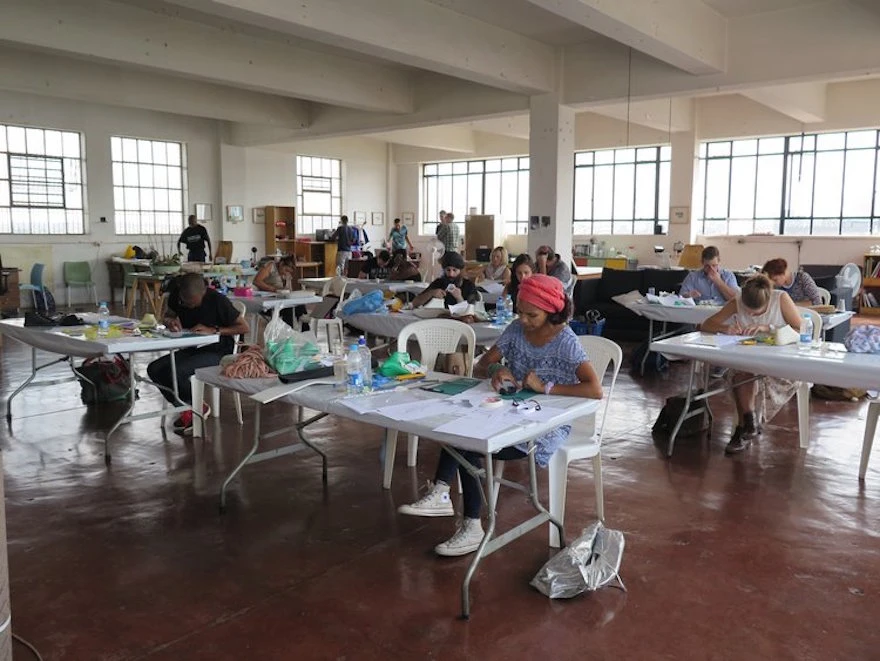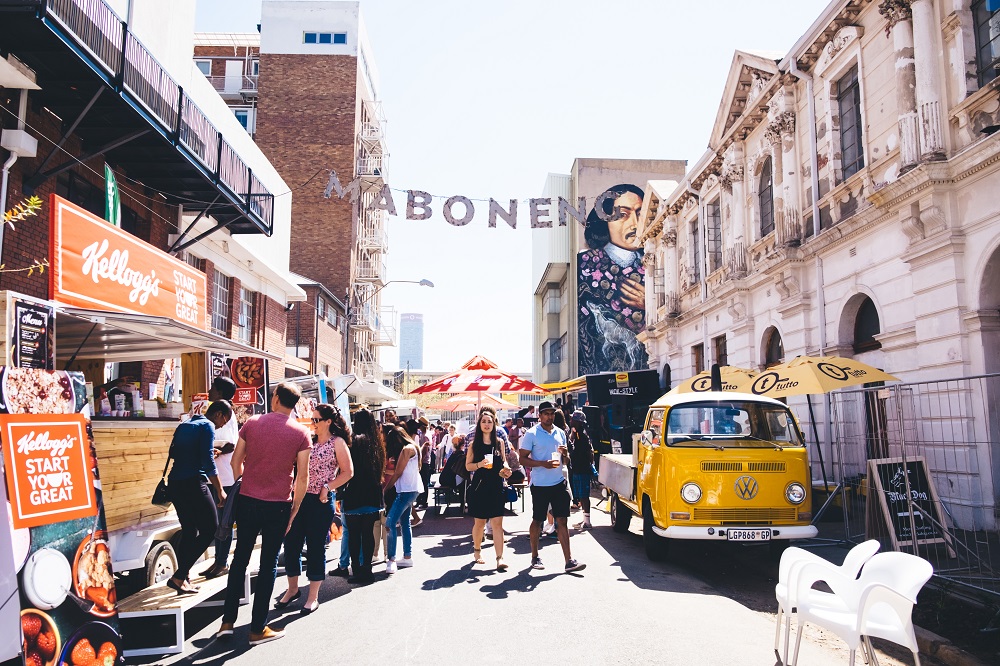“[Maboneng] has also helped to open a very needed debate, in academic and social circles, about urban transformation in complex contexts like Johannesburg.”

Though the process of urban renewal is an imperfect one that can sometimes give rise to the displacement of communities and contribute to pollution, its role in the rehabilitation and improvement of neglected built areas has been vital. It is a delicate balance of both maintaining a city’s character and providing a dramatic overhaul. Nowhere in South Africa is this more evident than in Johannesburg’s Maboneng Precinct.
French urban designer, Alice Cabaret has played a significant role in the precinct’s development.
“The most interesting thing about Maboneng is that it has an impact beyond its pure, physical shape. For example, it has contributed to shifting negative perceptions about Johannesburg, both at a local and an international level. At the same time, it has also helped to open a very needed debate, in academic and social circles, about urban transformation in complex contexts like Johannesburg.”
Born and raised in Paris, France, Cabaret made the decision to relocate to South Africa after visiting Johannesburg on a work trip for the French Development Agency. Fascinated by the rapidly changing face of the city, she decided to stay. She then subsequently began working as an urban strategist for Propertuity – the real estate agency who, at the time, were in the early stages of developing the area now known as Maboneng. While Propertuity has since gone under liquidation, the Divercity Urban Property Fund has committed to investing two billion Rand in the next 18 months.
In Cabaret’s view, some of the key components for successful urban regeneration include genuine community involvement, diversity and affordability, as well as architectural quality. Though a fierce debate around gentrification has long followed the Maboneng project, she strongly believes urban regeneration can be positive and inclusive – which is exactly why she focuses her practice on innovation as well as gradual, participatory and organic growth.
“Urban designers and property developers drew a lot of lessons from the failures of the past,” says Cabaret, discussing concerns around urban renewal processes.
“Over the past years, the Maboneng Precinct has provided a unique platform for entrepreneurs, artists or creatives to stay, work and collaborate. It has attracted public infrastructure upgrades and social housing programs that benefited the whole area. That is why the street culture of the precinct offers a radically different experience that contrast with exclusionary urban forms like gated communities, which are so common in Johannesburg.”
While she was working for Propertuity, Cabaret conceptualised and became the director of an initiative called GRIND. The Global Regeneration Initiative for Neighbourhood Development, it was formed as a response to the tendency of regenerated areas like Maboneng to become relatively exclusive. It facilitates the urban transformation neighbourhoods through social entrepreneurship and community engagement by providing free working spaces to students and young professional so they can develop their projects.
In 2015, Cabaret returned to Paris.
Enthused by what she felt was the city’s encouragement of new ideas and multidisciplinary collaborations in urban planning, she drew upon much of her experience in South Africa to co-found The Street Society. It is a collaborative agency promoting innovation in the sectors of property development and urban transformation.
Here, she works on projects ranging from strategic advisory for the creative reconversion of historic and industrial buildings, to the set up of urban innovation labs.
“Paris challenges are similar to other cities especially with regards to mobility, environmental sustainability and social inclusivity.”
She adds: “Expectations are extremely high regarding the quality of urban design and property projects. They must be unique, accessible, perfectly integrated in their urban environment and respectful of their architectural heritage. Most of all, the projects must be in line with the aspirations from the surrounding communities and future users.”

Equally important is the explicit addressing of city needs that arise due to gender. Studies show that women and men have different patterns in urban areas, particularly when it comes to using public space and transit therefore gendered perspectives can affect how streets are designed. It is vital that urban design spaces champion more female decision-makers and and expand the role of women in cities and urban planning.
“Urban design encompasses sectors like architecture or property development, where men are overrepresented,” Cabaret acknowledges. “But things are slowly changing. I am lucky to work with brilliant women who make a real difference, whether they are developers, architects, public sector representatives, consultants or urban designers.”
Though it would seem that the urban designer has been lured back to her hometown indefinitely, Cabaret’s hand in one of South Africa’s most important urban regeneration projects of the last decade is certainly a striking mark to leave.
Her time in Johannesburg, she tells us, has similarly made an unforgettable impression on both her and her approach to her work.
“My experience in South Africa has played a fundamental role in the creation of The Street Society,” she says. “It still affects my practice in so many ways. One of them is the capacity to innovate in challenging contexts and with limited resources, which is an approach that can inspire every city around the world. This is why I maintain an active connection with South Africa, and work on projects there whenever I have the opportunity to.”
Learn more about Cabaret’s work with the Street Society here.
SOURCE: https://www.designindaba.com/articles/creative-work/urban-designer-alice-cabaret-innovation-challenging-places-maboneng








